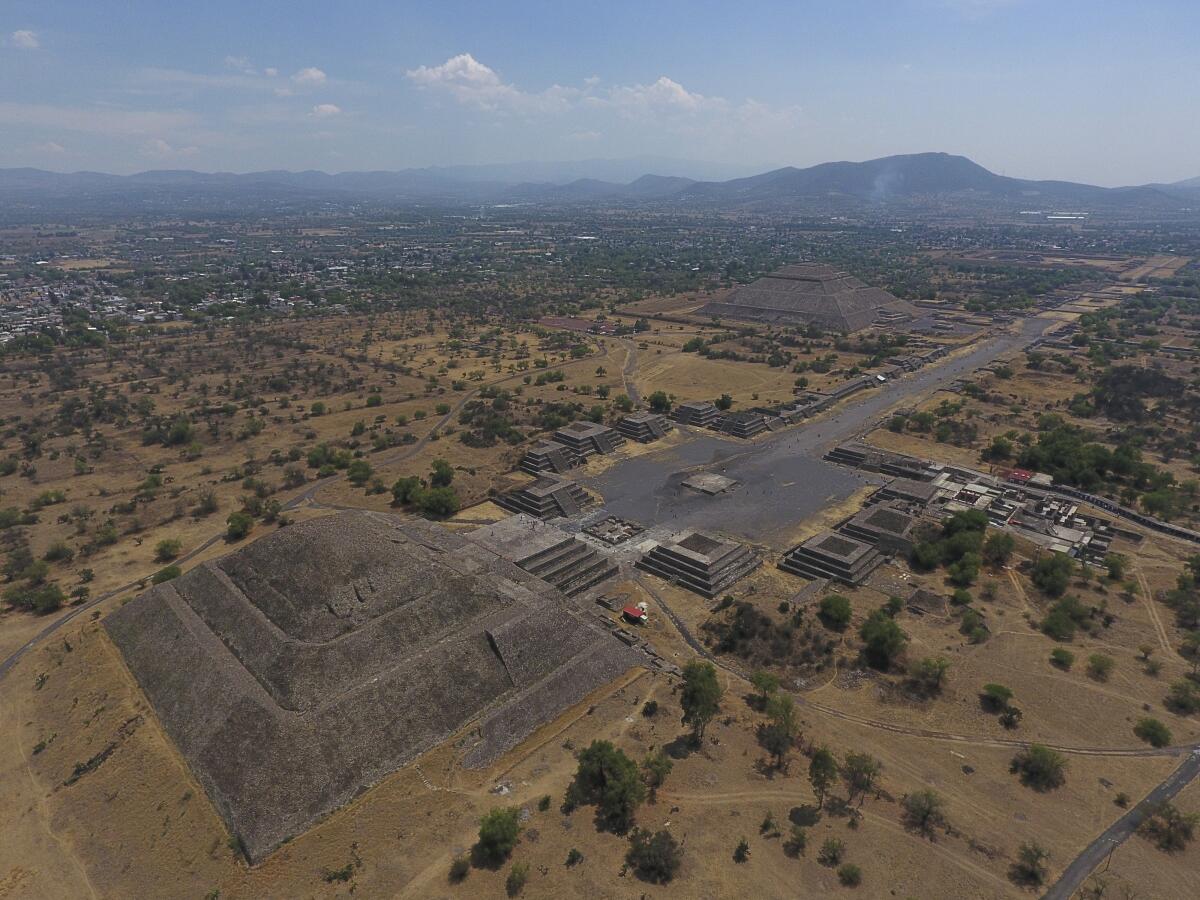Mexico’s Teotihuacán ruins under threat from encroaching bulldozers, officials say

- Share via
MEXICO CITY — A private building project is destroying part of the outskirts of the pre-Hispanic ruin site of Teotihuacán, just north of Mexico City, the Mexican government says.
Mexico’s Culture Department said Tuesday that it has repeatedly issued stop-work orders since March, but the building crews have ignored them. The department estimated that at least 25 ancient structures on the site are threatened, and it has filed a criminal complaint against those responsible.
Apparently, owners of farm plots are trying to turn the land into some sort of amusement park. The area is just outside and across a road from the site’s famous boulevard and pyramid complex.
The United Nations international council on monuments and sites said bulldozers threaten to raze as many as 15 acres at the site, which is a protected area. The council also said looting of artifacts had been detected.
“Teotihuacán is an emblematic site, declared as World Heritage by the UNESCO, that represents the highest expression of the identity of the people of Mexico,” the U.N. council said in a statement.
Mexico has long been unable to enforce building codes and zoning laws or stop illegal construction, in part because of the country’s unwieldy, antiquated legal system.
New discoveries reveal that Mexico’s Teotihuacan was not the peaceful, pastoral culture experts long thought it was.
The destruction so close to the capital raises questions about Mexico’s ability to protect its ancient heritage. Teotihuacán is the country’s most visited archaeological site, with more than 2.6 million visitors a year, and it has hundreds of smaller, more remote and often unexplored sites.
Teotihuacán is best known for its twin Pyramids of the Sun and Moon, but it was actually a large city that housed over 100,000 inhabitants and covered around eight square miles.
The still-mysterious city was one of the largest in the world at its apex between 100 BC and AD 750. But it was abandoned before the rise of the Aztecs in the 14th century.
Even its true name remains unclear. Its current name was given to it by the Aztecs.
But the Aztecs may have in fact called the city “Teohuacan” — literally “the city of the sun” — rather than Teotihuacán, which means “city of the gods” or “place where men become gods.”
The Pyramids of the Sun and Moon used to draw tens of thousands of visitors for the spring and fall equinoxes, before the COVID-19 pandemic hit.
More to Read
Sign up for Essential California
The most important California stories and recommendations in your inbox every morning.
You may occasionally receive promotional content from the Los Angeles Times.













